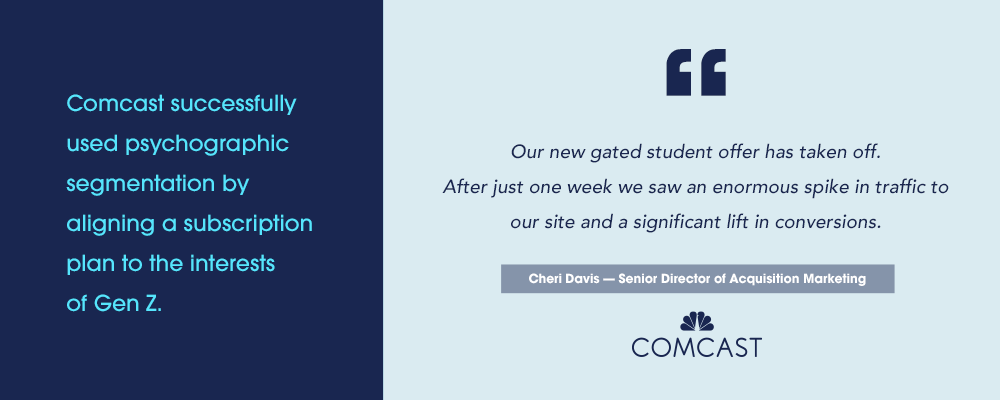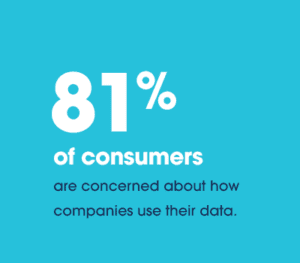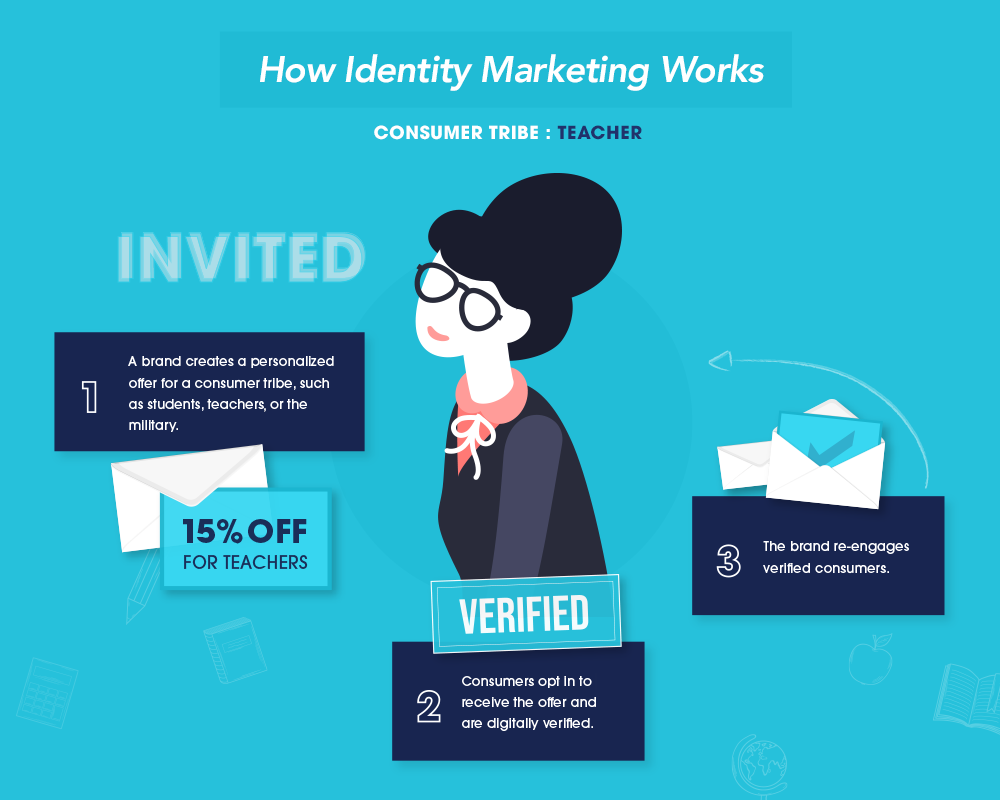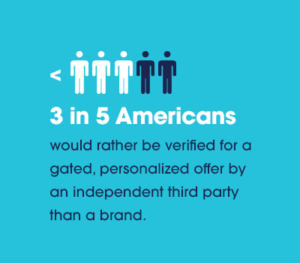How Top Brands Use Market Segmentation to Reach Customers

A famous American editor once said, “I cannot give you the formula for success, but I can give you the formula for failure—which is: Try to please everybody.” Top brands understand the wisdom of this. They know that marketing to everyone in a noisy and crowded world dilutes the power of their message, making it irrelevant and therefore easy to ignore.
Rather, they use segmentation marketing to customize messaging based on customer needs, preferences, and other factors. Because the messages are more relevant, customers feel validated and their engagement increases. When done well, segmentation helps brands avoid costly mass-marketing techniques and enjoy a better ROI on carefully targeted campaigns.
What is Market Segmentation?
Market segmentation is the process of dividing a target market into groups—or segments—based on common characteristics, such as age, occupation, affiliation, location, behavior, and interest. Marketing segmentation is based on the theory that people who have similar characteristics have similar unmet needs. Thus, people will respond similarly to a brand’s marketing efforts, increasing its effectiveness.
With market segmentation, you can:
- Consolidate and sharpen customer pain points. Market segmentation helps you zero in on your customers’ most pressing problems, such as easy, affordable access to essential products or services.

- Simplify messaging to make it more relevant. Customers respond to clear, direct marketing messages that prove you understand—and can help address—their pain points.
- Build effective marketing campaigns. You can use segmentation to create targeted campaigns and identify the best channels for reaching your audience—such as social media, events, content marketing, or digital advertising.
- Attract high-quality prospects. Properly targeted messages draw in ideal prospects, who in turn make ideal customers: high-value, repeat buyers who share messages and offers with friends and family.
- Stand out from the competition. The more specific the message, the less it sounds like everyone else’s. Messages based on the needs and attributes of a specific market segment stand out.
- Deepen customer loyalty. When brands know what their customers value, want, and need, they can create offers and messages that incentivize them to buy again and again.
The Different Types of Market Segments
There are four basic types of market segmentation:
Geographic Segmentation
Geographic segmentation identifies consumers in a defined geographic area. This can be very specific, such as ZIP code, city, state, or country. Less well-defined geographic segmentation includes the type of area, such as a cold or warm climate, or whether an area is rural or urban. Geographic factors greatly influence consumer needs, interests, and preferences, and they can help brands determine where and how to focus their marketing efforts.
Examples: Coca-Cola sells different drink products around the world, including Ciel bottled water in Mexico and Kuat, a Brazilian guaraná-based drink. John Deere sells snow blowers to customers who have snowy winter in common, such as in the Northeast.
Demographic Segmentation
Demographic segmentation targets customers using basic information such as age, gender, education level, income level, family size, ethnicity, and occupation. This is a popular form of segmentation because the types of products and services consumers commonly buy depend on demographic factors.
Examples: Market segmentation examples include senior living communities that aim their marketing efforts toward people aged 65 or older as well as their adult children. Luxury car brands focus on high-earning individuals, although they have diversified to reach nontraditional segments, such as younger female buyers.

Behavioral Segmentation
Brands use behavioral segmentation to reach customers based on their preferences and behavior. It explores how a customer responds to a brand, including their:
- Purchasing and spending habits.
- Attitudes.
- Use of a product or service.
- Behavior during the purchase process.
- Interactions with the brand’s website.
Examples: Hospitality brands such as airlines reward customer purchases with frequent flyer programs. And analyzing online activity such as website click behavior helps brands optimize their site navigation to improve conversions.
Psychographic Segmentation
Psychographic segmentation is based on deep-seated attributes, such as lifestyle, values, opinions, interests, and personality traits. Members of certain occupations or stages of life—typically elements of demographic segmentation—often share core identity attributes. For example, members of the military and teachers exemplify dedication and loyalty. Young adults and students are highly social and connected.
Example: Streaming services giant Comcast created a bold offer that appealed to Gen Z : a steep discount to college students on plans that included free access to Amazon Music and HBO. Because the offer aligned well with Gen Z lifestyle and interests, it performed well. “Our new gated student offer has taken off,” said Cheri Davies, senior director of acquisition marketing. The company saw “an enormous spike in traffic to our site and a significant lift in conversions.”

How to Implement a Market Segmentation Strategy
Once you understand what are market segments, you can build your own market segmentation strategy. It includes these five steps:
- Define your target market. To do this, ask questions like:
- Where does your brand fit in the current marketplace?
- Can you identify a need for your product or service?
- What is the market size?
- Divide your market into segments. Decide which of the four segmentation types to use—of course, you can use more than one!
- Analyze your market by asking your audience questions based on the segmentation types you’re using. Use polls, surveys, focus groups, and other methods to get quantifiable answers.
- Create your customer segments based on the analysis of your audience’s responses. These segments should be unique and fit well with your brand.
- Test and adjust. Assess to see if the market segments you’ve chosen work for your brand. If not, change your survey method and analysis to create a more suitable segment.
Data Collection Methods
From demographic-based mailing lists to digital analytics and customer surveys, brands have multiple methods for collecting data on their target segments. Each method affects the quality of data and engagement. The data collection methods listed below range from low to high levels of engagement.
Inferred
Inferred data is passively collected as someone navigates through a digital property like a website or third-party media property. The data is collected without the consumer’s explicit consent. This is typically used for most behavioral data collection.
Declared
Consumers explicitly provide declared data through a form or feedback process. This could be a survey or questionnaire that the consumer fills out to provide more information about them in exchange for a more personal experience.
Verified
This is attribute data, such as military status, verified by an authoritative third-party service. This service validates that the person has that characteristic or attribute. Data that is verified is collected through a declared data collection method.
The Challenges of Market Segmentation
Market segmentation shares some of the pitfalls of traditional personalized marketing—especially regarding the value of the market segment data and how it’s collected.
Incomplete, Low-Value Information
Demographic segmentation is easy and inexpensive to obtain, but it provides only the most basic attributes on prospects and doesn’t qualify them. The intent signal to buy is weak, which lowers the conversion rate.
High Cost
Customer data platforms (CDPs) collect information such as purchase history and product usage—helpful for behavior segmentation. However, CDPs are expensive to set up and maintain. They also provide limited value, offering extensive information on existing customers but little to no information on prospects.
Lack of Privacy
Behavioral marketing, which uses third-party data from Facebook and data management platforms (DMPs), offers greater insight on potential prospects. However, this information is unverified and relies on unethical data collection. Eighty-one percent of consumers are concerned about how companies use their data.

Limited Reach
Members of a particular segment don’t know who else is in their group, so when they receive a targeted (personalized) offer, it ends at their doorstep. For example, most customers at AT&T don’t know everyone else who uses the carrier. When these customers get a personalized offer, they can’t spread the word in a way that would help the brand.
Identity Marketing, a Modern Approach to Market Segmentation
Identity marketing rises above the shortcomings of traditional market segmentation. Rather than using costly, limited methods of data collection to build a market segment, identity marketing is based on a consumer tribe that aligns with a brand’s values—the ultimate market segmentation! These consumer tribes share deep-seated identity attributes such as their life stage (students, seniors), occupation (teachers, nurses, first responders), or affiliation (the military community).
Identity marketing campaigns boost customer acquisition by helping brands harness the networking power of consumer tribes to make an offer go viral. Unlike traditional market segments, consumer tribes are socially connected, which greatly enhances sharing. For example, 83% of Gen Z would share a gated offer with friends.
Here’s how identity marketing works:

- A company creates a personalized offer for a consumer tribe that aligns with its brand and invites prospects to take advantage of it through whatever channels the company normally uses.
- Consumers opt in to redeem the offer and are digitally verified to ensure the offer’s integrity and prevent discount abuse.
- Brands use this zero-party data to nurture ongoing customer loyalty.
Identity marketing builds on three key pillars:
01 Personalization Is Rooted in Identity
Marketing to consumer tribes with identity-driven offers creates a strong emotional connection— something customers want. When brands are willing to align their identity with these segments and demonstrate they truly “see” consumers, people are motivated to act. Nearly 95% of consumers given a personalized offer based on their identity would redeem it.
02 Consent Creates a Reciprocal Exchange
Identity marketing is a form of “invited” market segmentation, where brands respect consumer privacy by meeting them on equal terms:
- A brand invites all members of the consumer tribe to enjoy a gated, personalized offer.
- Consumers choose to opt in, “inviting” the brand into their lives.
- The brand and its new customers form a relationship built on mutual respect.
03 Verification Launches a Brand Relationship Built on Trust
To attract the correct market segment, brands need to verify customers actually belong to the consumer tribe they’re targeting. Verification ensures the integrity of the offer in the eyes of the audience because they know the offer is truly exclusive. Verification also protects a company’s margins by preventing discount abuse, which can reach as high as 35%.
Identity marketing further strengthens consumer trust by using third-party verification. Nearly three in five Americans would rather be verified for a gated, personalized offer by an independent third party than a brand’s customer service representative.

Identity Marketing Success Stories
Leading brands in retail, streaming, software, hospitality, and finance use identity marketing to acquire high-value consumer tribes:
CheapCaribbean Brings 8,000 Nurses into Its Travel Club
CheapCaribbean wanted to create a promotion for its nurses—a consumer tribe that pairs well with the brand. The brand’s personalized offer brought 8,000 nurses into its “ER&R Club,” reduced fraud by 36%, and saved more than 100 hours of staff time.
Targus Uses Identity-Driven Offers to Increase Orders by 389%
Targus wanted to generate greater brand awareness and loyalty while rewarding key consumer tribes and corporate clients. After running the identity-driven offers for a year, it decided to ramp things up. The new programs generated a 389% increase in the number of orders and a 413% increase in revenue, year over year.
Headspace Acquired 25,000 New Subscribers
Headspace, the popular subscription-based meditation app, wanted to honor educators with a personalized offer that gives them free access to the app and classroom support. Headspace acquired 25,000 new educator subscribers in three new markets, reduced fraud by 41%, and boosted engagement.

A Final Word on Market Segmentation
Brands use market segmentation to break through the noise and deliver meaningful content to their audience. But traditional market segmentation has built-in drawbacks—privacy concerns, high cost, and limited reach—that make them less effective. With identity marketing, brands can target and acquire high-value customers in a way that builds trust, respects privacy, and inspires word-of-mouth marketing. That’s a win-win for everyone.
Read our e-book: The Definitive Guide to Identity Marketing